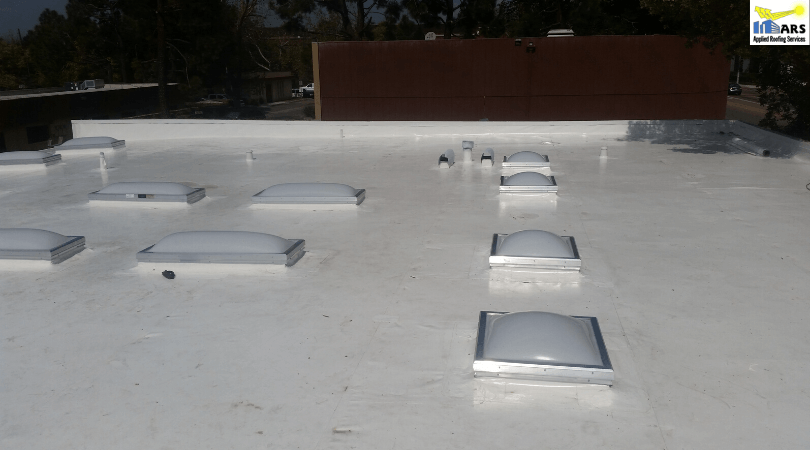


Single-ply roofing systems have become much more popular than other roofing materials due to their extensive options, distinct styles, and greater availability. These are defined as flexible sheets of compounded plastic-derived material used to cover flat and low-sloped roofs. These prefabricated roofing membranes can be installed directly on the roofing substrate, reducing installation time and material costs. When properly installed, they offer an inherent advantage over traditional materials due to their greater strength, durability, and flexibility.
TPO includes polymers, which are manufactured by polymerizing polypropylene with ethylene-propylene rubber to enhance weldability and durability. This polymer is then used with other ingredients, like UV stabilizers, antioxidants, fire retardants, and pigments, to produce TPO roofing membranes. Typical TPO includes both a core membrane and cap with a polyester reinforcing scrim encapsulated between these layers. The cap is 75% TPO polymer, 25-35% fire retardants, and small quantities of pigment and UV stabilizers. The core membrane has a similar composition but includes up to 15% recycled TPO without any need for UV protection.
PVC, also called vinyl, is composed of chlorine and ethylene. It is recyclable, fire-resistant, and uses fewer petrochemicals than other roofing systems. A PVC single-ply roofing membrane is composed of two layers of PVC material covering a reinforcement scrim. The top layer is UV-resistant, flexible, and can be colored. The bottom layer is grey or black PVC containing more plasticizers for weldability and flexibility. Generally, the reinforcements for PVC (fiberglass or polyester) are added to enhance longevity, strength, and dimensional stability performance, thus making it a cost-effective roofing solution.
An EPDM roof is a black roof and feels the same as the rubber used in tire tubes. It is created using equal parts of polymer, carbon black (for UV resistance), and other materials used for fire resistance and stability. During manufacturing, the thermoset EPDM is created using the chemical cross-linking of polymers or molecular chains. A unique character of EPDM is it can only be bonded to itself during installation using tape or adhesive because new molecular linkages cannot be formed after cured. EPDM performs well because it is UV-resistant and has high installation efficiency and consistency.
The following are some of the advantages of using single-ply roofing systems:
A single-ply roofing system withstands chemical conditions, making it a perfect choice for roofs vulnerable to acid rains and grease or oil.
Single-ply roofing membranes come in large rolls, making them easier to install than other roofing systems. Also, it is safer and less risky than built-up roofing systems.
EPDM and PVC single-ply membrane roofs have been in use for decades. The materials are readily accessible and installers are familiar with the installation.
A premium-quality single-ply system with an excellent base fabric provides superior puncture resistance against foot traffic.
Single-ply roofing systems are naturally reflective, absorbing less heat and withstanding extreme weather conditions. They are more durable and can help reduce your building’s cooling and heating costs. Are you looking for the best single-ply roofing system for commercial buildings? Contact Applied Roofing Services in California at 714-632-8418 to get a quote online.